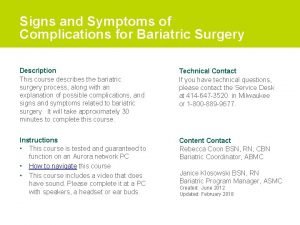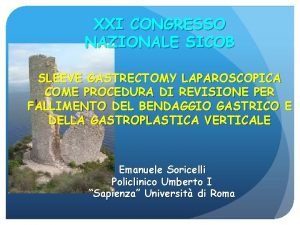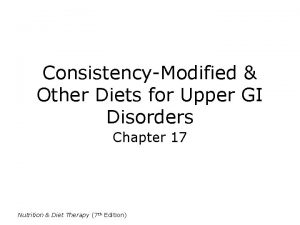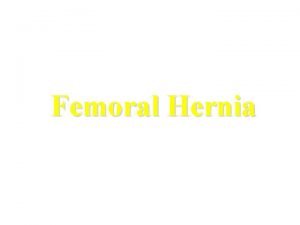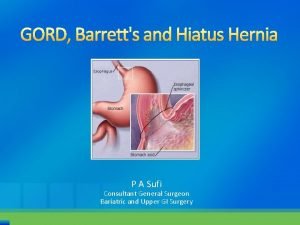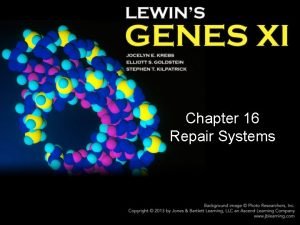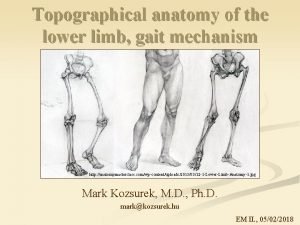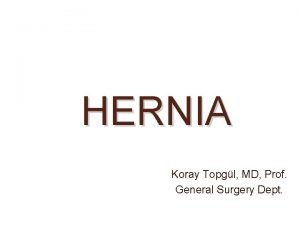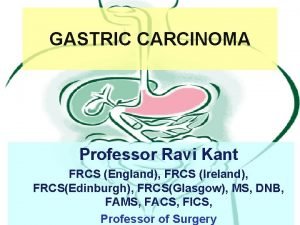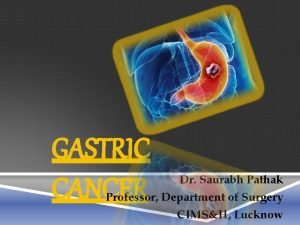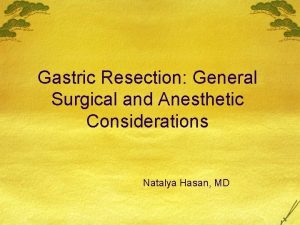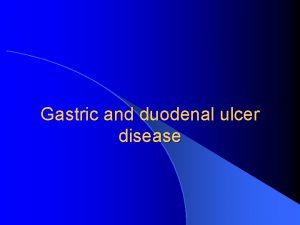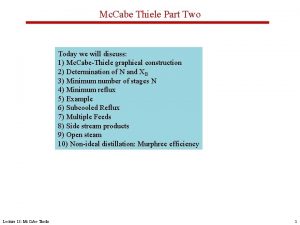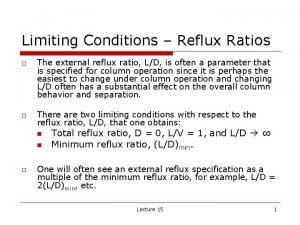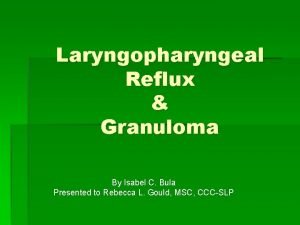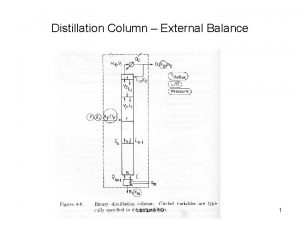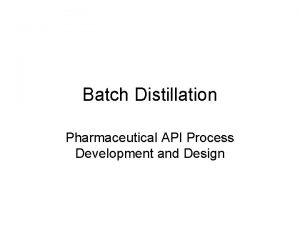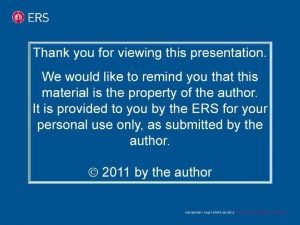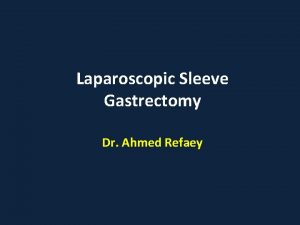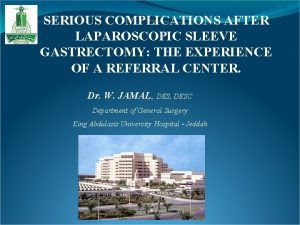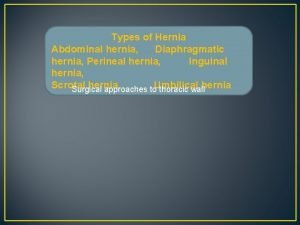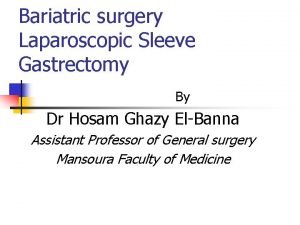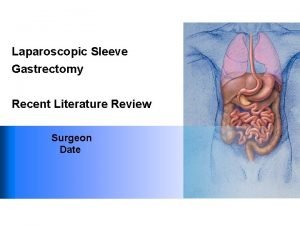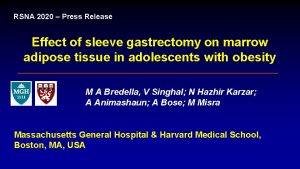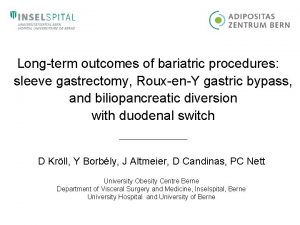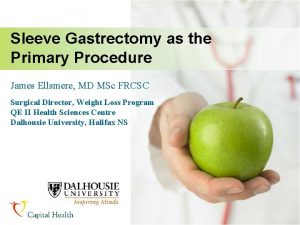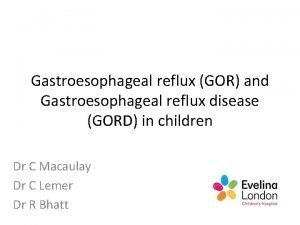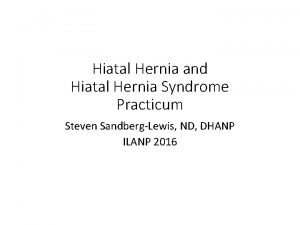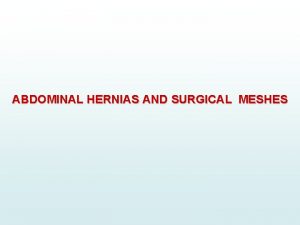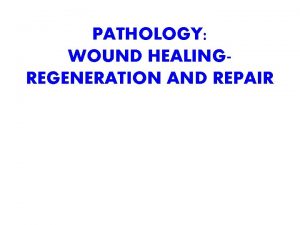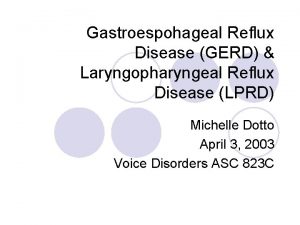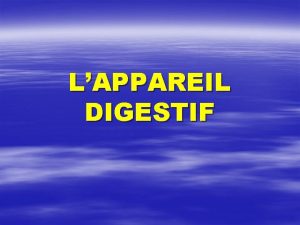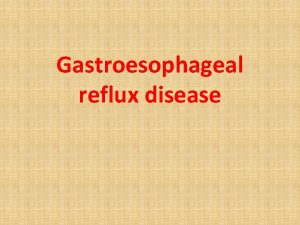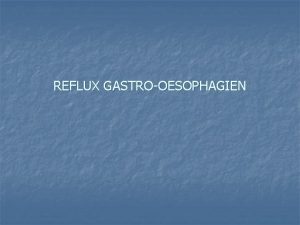REFLUX AFTER SLEEVE GASTRECTOMY AND HIATUS HERNIA REPAIR























- Slides: 23

REFLUX AFTER SLEEVE GASTRECTOMY AND HIATUS HERNIA REPAIR; A STUDY OF SUTURE AND MESH REPAIRS. 2, 3, Brancatisano R 1, Devadas M 1, 2, 3 Alhayo ST 1 Circle. Of. Care, NSW Australia 2 Department of Surgery, Nepean Hospital NSW 3 Nepean Clinical School, The Sydney University Background: Reflux remains a prevalent post-operative consideration associated with surgical intervention for weight loss. There are controversies whether simultaneous hiatoplasty is protective against reflux. No studies have further stratified the effects of different repairs yet. Objectives: Evaluate reflux outcomes of LSG with either suture or mesh hiatoplasty. Methods and Materials: 279 patients underwent (LSG) with either suture or mesh repair of concomitant hiatus hernia between (2012 to 2016) at one institution. Surgical technique was consistent with both surgeons. Patients demographics, operative details, pre-operative physical measurements and symptoms were collected. Pre- and post-operative reflux was assessed by pharmacological parameters and patient self-reporting scale. Follow up Total Body Weight Loss (TBWL), BMI and Excess Weight Loss (EWL) % were examined and stratified accordingly. Comparison analysis between (LSG- suture cruroplasty) and (LSG- mesh repair) patients was conducted.

REFLUX AFTER SLEEVE GASTRECTOMY AND HIATUS HERNIA REPAIR; A NON-RANDOMISED PROSPECTIVE STUDY OF SUTURE AND MESH REPAIRS. Reflux symptoms per repair 46. 31% 25. 00% 27. 86% 29. 5 29. 7 42. 1 35. 5 42. 1 71. 10% 75. 4 75. 3 Physical parameters 34. 9 Results: 71 and 67 patients had LSG with suture and mesh repair respectively with>6 months follow up. 83. 4% were females. Preoperatively, mean BMI was 42. 75. Postoperative BMI, TBWL%, EWL% for both groups were similar and of no statistical significance (Graph 1). Though preoperative reflux was more prevalent in mesh group (Graph 1, 2, 3). However, it was statistically less prevalent post-operatively in mesh group than suture group (p<0. 001). TBWL EWL% LSG-Mesh Repair Pre-op BMI Post-op BMI LSG-Suture Repair Graph 1 LSG-Mesh Repair Preop Reflux LSG-Suture Repair Postop Reflux Graph 2

REFLUX AFTER SLEEVE GASTRECTOMY AND HIATUS HERNIA REPAIR; A NON-RANDOMISED PROSPECTIVE STUDY OF SUTURE AND MESH REPAIRS. Postop Symptoms Preop Symptoms 75. 0% 70. 49% 52. 45% 38. 4% 28. 9% 32. 7% 26. 61% 19. 67% 19. 3%21. 31% 5. 7% 6. 55% No reflux Reflux no meds LSG-Mesh Repair Reflux- PPI use LSG-Suture Repair Graph 3 No reflux Reflux no Reflux-PPI use meds LSG-Mesh Repair LSG-Suture Repair Graph 4 Conclusion: Mesh repair of concomitant hiatus hernia in patients undergone LSG revealed significant benefit in management of post-operative reflux over suture cruroplasty only. Further study is to follow comparing results to LSG only.

POST SLEEVE GASTRECTOMY REFLUX SYMPTOMS • Ongoing prospective research is being conducted to investigate the symptoms of all patients underwent laparoscopic sleeve gastrectomy. • Of the 1500 patients identified to have undergone sleeve gastrectomy at Circle of Care between 2011 and 2016, 568 patients have -to-this-date- responded to the questionnaire.

• COC


















 Duodenal switch complications
Duodenal switch complications Sicob sleeve gastrectomy
Sicob sleeve gastrectomy Sleeve gastrectomy vls
Sleeve gastrectomy vls Mechanically altered diet
Mechanically altered diet Lockwood operation
Lockwood operation Gord
Gord Excision repair
Excision repair Rec a
Rec a Hernia linea alba
Hernia linea alba Medial limb
Medial limb Mcvay repair
Mcvay repair After me after me after me
After me after me after me John 14 1-3
John 14 1-3 Subtotal gastrectomy
Subtotal gastrectomy D1 d2 d3 gastrectomy
D1 d2 d3 gastrectomy Gastrectomy anesthesia considerations
Gastrectomy anesthesia considerations Gastric ulcer types
Gastric ulcer types Polya gastrectomy vs billroth 2
Polya gastrectomy vs billroth 2 Calculate minimum reflux ratio
Calculate minimum reflux ratio Reflux ratio
Reflux ratio How to treat laryngopharyngeal reflux
How to treat laryngopharyngeal reflux Partial condenser energy balance
Partial condenser energy balance Reflux ratio
Reflux ratio Ahipost
Ahipost
